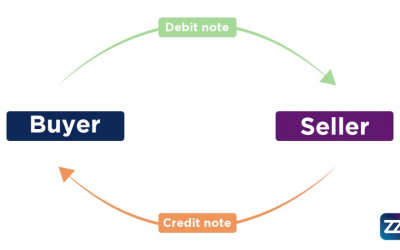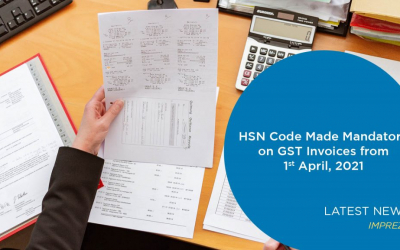
For every emerging enterprise, the biggest challenge does not involve coming up with a new idea; it lies in sustaining that idea. To be a successful business, the rule of the thumb is to keep it buoyant. A study indicates that only 48.5% of the startups remain open and turn into small businesses after five years of inception. Deft business management aided by efficient resource planning techniques is the mantra for a sustainable business.
What is Resource Planning?
Resource planning is integral to putting together a successful business plan. It involves a total estimate of the resources required for a particular job, and the timeline targeted to close it. Resources include workforce, skill-based allocation of responsibilities to the workforce, infrastructure, and equipment.
Efficient resource planning helps determine
- How much (quantity and quality) resources are required
- Estimated time to complete a project
- Additional resources and when are those to be incorporated for the smooth sailing of the project.
Stages Involved in Resource Planning
Resource planning for a small business involves three crucial stages:
- Identification of Resources: In the first stage, we identify our resources and prepare an inventory. The process involves surveys, mapping, quantitative and qualitative evaluation, and estimation of resources.
- Evaluation of Resources: This stage runs a full feasibility check on the resources regarding availability, technology, requirement, and expenses involved. Develop a plan focussing on the relevant technology, appropriate skills, and infrastructure for implementing the resources.
- Exploiting Resources: This stage puts all the planning done in the first two stages into action. Check your resource development plans in the context of the overall national development plans before putting them into practice.
Popular Resource Planning Techniques
There are several ways to strategize and plan resources. Some of them are:
JIT
JIT or just-in-time management is a new age resource planning and management technique. From a production management philosophy to minimize inventory cost, it has become a technique directed to mitigate or control waste.
The just-in-time strategy allows ordering materials as and when required in the process of production. The idea is to control costs by reducing overhead expenses on inventory. Thus, you only buy as much as is needed and when it is needed.
To implement the just-in-time method successfully in your resource management plan, you have to have an effective inventory management strategy.
Lean Manufacturing
Lean manufacturing is a production process based on optimising productivity and minimising waste simultaneously in the manufacturing process. In the lean manufacturing philosophy, anything that does not count as value for money in the final product is labelled as waste. Waste includes activities that require time, effort, skills, money but add no value to the final product for the customer. These wastes include:
- Underutilised human resources
- Excess of inventories
- Ineffective procedures
- Unnecessary investment in infrastructure
By controlling ineffective practices, surplus stocks and underutilisation of resources, lean manufacturing
- improves product quality
- saves time and money
- increases business efficiency
The five core principles to implement lean manufacturing are:
- Value: Determined from the customer’s perspective – how much they are ready to pay for a product or service. The manufacturer/ service provider builds on this value. They create products/ services with minimal waste to achieve cost-effectiveness for customers without compromising on optimum profits.
- The Value Stream: Mapping the value stream helps determine waste incurred in each stage of the production cycle.
- Flow: Creating a smooth workflow by eliminating functional barriers throughout the production process to improve lead time.
- Pull: commencing work only where there is a demand to avoid any surpluses/ wastes.
- Perfection: continuously evolving and improving upon the production practices to find the perfect system eliminating waste.
Waste Reduction through Technology
Technology plays a significant role in minimising waste in the production cycle. By waste reduction, we do not simply mean tracking, managing, or disposing industrial waste using technology. Here, waste means the waste of resources, increased lead time, excess of inventories and unnecessary procedures and processes.
Technological advancement has come to play a significant role in minimising this waste. For example, workforce management softwares, financial management softwares, bookkeeping apps etc., improve business efficiency by
- minimising workforce expenses,
- ensuring accuracy
- keeping the team members better connected
- an overall improvement of lead time
Technology has indeed become a prime mover in resource planning for small businesses. The Imprezz software for business operations is the best example in this direction.
How can Imprezz Help in Resource Planning
Imprezz is a new age fintech solution for all your business operations like creating quotations, invoicing, order processing, inventory management, managing payments and receipts etc., to help small business owners keep track of every small detail for smooth operations of the business. Imprezz covers the day to day needs of your business with minimum hassle.
By introducing a one-stop solution to managing your business effectively and efficiently, Imprezz has emerged as a potent technological tool for resource planning.
Here’s how:
- The Inventory Management feature helps keep track of the existing stock. You can set a lower limit for stocks, and the software will send in timely reminders for stock replacement. Keeping track of the incoming and outgoing stocks and timely reminders for stock replacement before running out are features in consonance with the just-in-time resource planning technique. Not only does it save the business from investing in irrelevant stocks or overstocking, but it also saves the embarrassment of running out of stocks, thus ensuring credibility and saving time.
- Keeping track of the expenses and getting payment reminders helps you not miss a deadline. Moreover, you get to maintain your business’s accounts by yourself, saving an added expense of hiring a professional. This is in keeping with the lean manufacturing technique as you save costs on human resources and efforts on maintaining accounting ledgers and paperwork. Technological intervention minimises errors enabling you to improve lead time.
- The flexibility of accessing your business operations’ details from anywhere under the sun makes business operations more efficient. By bringing different features – creating quotations and invoicing, bulk payments and reminders, managing documents and comparing expenses overtime – under one roof, Imprezz software saves your time and effort through technology.
In the Indian business climate, such unique technological innovations as Imprezz software can breathe a fresh lease of life. Resource planning revives your business’s health by controlling waste. With the right tools for resource planning, startups can more smoothly level up to small businesses and evolve into a more sustainable model.


